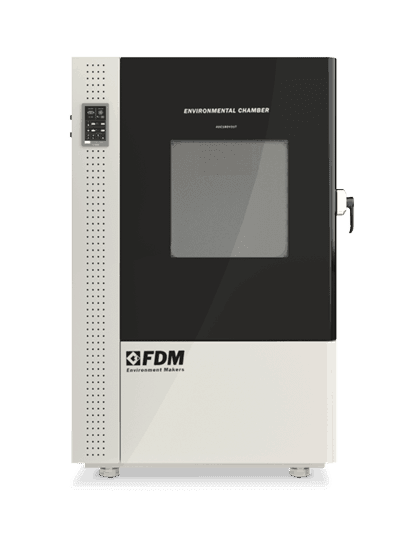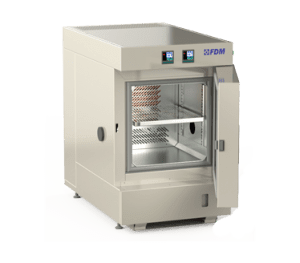
Climatic chambers are the ideal tools to examine how materials and substances respond at different temperatures. But what if we are not interested in the behaviour of a material at a given temperature as much as its reaction to a sudden and radical change in environmental degrees?
The climatic chambers can also test this situation and it is the case of the Thermal Shock test.
What is Thermal Shock?
Science explains that thermal shock is a state of internal stress in a material caused by sudden thermal changes that can cause damage or even breakage of the material itself.
Examples of thermal shock can happen in everyday life such as when we put an ice cube to cool a very hot drink and cracks appear on its surface.
It has also been speculated that the iconic fracture of the Liberty Bell, a symbol of United States Independence, was caused by an excessive rapid cooling during the melting of iron which caused the injury the first time it was rung.
Perform
Extreme Testing
Discover the new series of Environmental Chambers for controlled climate testing
Which Materials are subject to Thermal Shock?
The materials that can be subject to thermal shock during their use are quite varied. For this reason, there is no unifying standard ISO (International Organization for Standardization, or the body that draws up international standards for material testing) but specific standards for testing each material.
For example, tests on glass containers are subject to ISO 7459: 2004, while metallic and inorganic coatings follow ISO 14188: 2012.
Electronic components are another great field of use of thermal shock tests, involving multiple trades: not only everyday tech products and automotive, but also aeronautical engineering, aerospace and military technology. The ability to withstand sudden temperature changes is literally of vital importance to these technologies, making Thermal Shock testing essential in these industries.
How does the Thermal Shock Test work?
To qualify as a Thermal Shock test and not a simple stability test performed at different temperatures, the material must be subjected to an excursion of at least 15° within a minute.
Generally, the overall excursion of a thermal shock test exceeds 100° to verify the tightness of the material in the most extreme conditions.
The Thermal Shock Test can be performed in two ways: by connecting two climatic chambers with different temperatures using an elevator that transports the material from one environment to another, or by rapidly altering the temperature inside a single climatic chamber.
Compact Climatic Chamber
Discover the new Compact Climatic Chamber
The FDM Climatic Chamber with Thermal Shock Test
The FDM Environmental Chamber is the ideal tool to perform a thermal shock test in a practical and precise way. FDM professionalism has roots in three generations of climatic chamber builders and our FDM Environmental Chamber employs top-notch technology with a temperature range that goes from -70° up to 180°.
Write to us to find out more.
Would you like to receive a quote or do you have questions about the product?
Contact us to receive more information about this Product.



